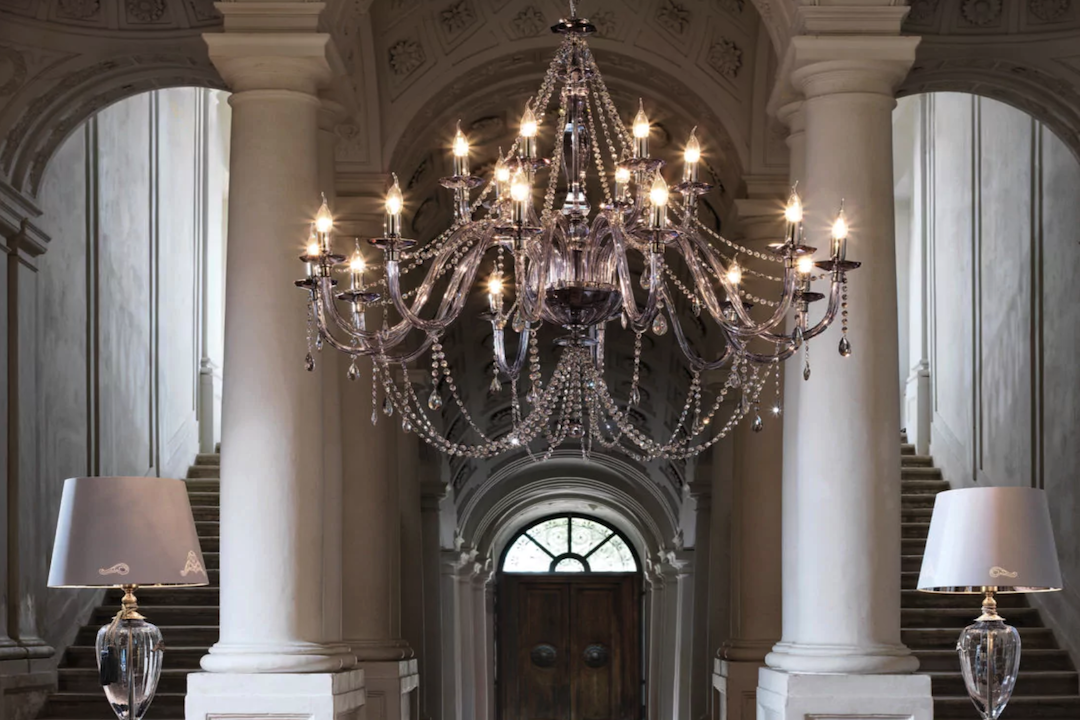The history of chandeliers is as intricate and multifaceted as the designs themselves. Originating in the medieval period, chandeliers were initially simple wooden frames adorned with candles. These early iterations served a practical purpose, providing light in dark spaces, but they also began to evolve into symbols of wealth and status.
As the Renaissance unfolded, chandeliers Sellingni became more elaborate, often crafted from wrought iron or wood and embellished with glass or crystal. The Baroque period saw a significant transformation, with chandeliers becoming grandiose fixtures that adorned the ballrooms and dining halls of palaces and aristocratic homes. The use of crystal, particularly in the 18th century, marked a turning point; it allowed for refracted light to create dazzling displays that captivated onlookers.
As the centuries progressed, the Industrial Revolution brought about new manufacturing techniques that made chandeliers more accessible to the burgeoning middle class. The introduction of gas and later electric lighting further revolutionized chandelier design, allowing for more intricate and larger structures. By the early 20th century, hotels began to adopt these stunning fixtures as focal points in their lobbies and dining areas, recognizing their ability to convey luxury and sophistication.
The evolution of hotel chandeliers reflects broader societal changes, from the exclusivity of aristocratic homes to the democratization of luxury in public spaces. Today, chandeliers continue to evolve, incorporating modern technology and innovative designs that reflect contemporary aesthetics while honoring their rich history.
Characteristics of Contemporary Elegance
Contemporary elegance in hotel chandeliers is characterized by a harmonious blend of simplicity and sophistication. Unlike their ornate predecessors, modern chandeliers often embrace minimalism, focusing on clean lines and geometric shapes that exude a sense of understated luxury. This shift towards simplicity does not equate to a lack of creativity; rather, it allows designers to explore new forms and materials that challenge traditional notions of what a chandelier can be.
For instance, many contemporary designs incorporate asymmetry or unexpected configurations that draw the eye and create visual interest without overwhelming the space. Another hallmark of contemporary elegance is the thoughtful integration of technology. Modern chandeliers often feature energy-efficient LED lighting, which not only reduces energy consumption but also allows for customizable lighting options.
This adaptability enables hotels to create different atmospheres throughout the day or for special events, enhancing the overall guest experience. Furthermore, contemporary chandeliers frequently incorporate smart technology, allowing for remote control and automation that aligns with the increasing demand for convenience in modern hospitality. This fusion of aesthetics and functionality is a defining characteristic of contemporary elegance, making modern chandeliers not just decorative elements but integral components of hotel design.
Materials and Designs of Modern Hotel Chandeliers
The materials used in modern hotel chandeliers reflect a diverse array of influences, ranging from traditional glass and crystal to innovative metals and sustainable resources. While crystal remains a popular choice due to its timeless appeal and ability to refract light beautifully, designers are increasingly experimenting with alternative materials that offer unique textures and finishes. For example, metal finishes such as brushed brass or matte black have gained popularity for their ability to add a contemporary edge to chandelier designs.
These materials can be combined with glass or acrylic elements to create striking contrasts that enhance visual depth. In terms of design, modern hotel chandeliers often draw inspiration from various artistic movements and cultural influences. Mid-century modern designs, characterized by organic shapes and bold colors, have made a resurgence in recent years, appealing to hotels seeking to evoke a sense of nostalgia while remaining firmly rooted in contemporary aesthetics.
Additionally, some designers are embracing biophilic design principles by incorporating natural elements into their chandelier creations. This might include using reclaimed wood or incorporating plant-like forms that mimic organic growth patterns. Such designs not only enhance the visual appeal but also resonate with guests’ growing desire for sustainability and connection to nature.
The Role of Lighting in Modern Hotel Design
Lighting plays a pivotal role in modern hotel design, influencing not only the aesthetic appeal but also the overall atmosphere and functionality of spaces. Chandeliers serve as central lighting fixtures that can define a room’s character while providing essential illumination. In lobbies and dining areas, for instance, a well-placed chandelier can create a welcoming ambiance that invites guests to linger and socialize.
The strategic use of lighting can also highlight architectural features or artwork within the space, drawing attention to elements that contribute to the hotel’s unique identity. Moreover, the role of lighting extends beyond mere aesthetics; it significantly impacts guests’ moods and experiences. Studies have shown that different lighting conditions can evoke various emotional responses, making it crucial for hotel designers to consider how lighting will affect guest interactions within the space.
For example, warm lighting can create an intimate atmosphere ideal for romantic dinners or social gatherings, while cooler lighting may be more suitable for functional areas such as conference rooms or fitness centers. By thoughtfully integrating chandeliers into their lighting schemes, hotels can enhance guest satisfaction and create memorable experiences that encourage repeat visits.
Incorporating Modern Chandeliers into Hotel Spaces
Incorporating modern chandeliers into hotel spaces requires careful consideration of both design and functionality. The placement of these fixtures is critical; they should be positioned to maximize their visual impact while ensuring they do not obstruct sightlines or impede movement within the space. For instance, in a grand lobby, a large chandelier can serve as a dramatic focal point that draws guests’ attention upon entry.
Conversely, in more intimate settings such as lounges or private dining rooms, smaller chandeliers can create cozy enclaves that encourage conversation. Designers must also consider the overall theme and aesthetic of the hotel when selecting chandeliers. A boutique hotel with an eclectic design may benefit from unique or artisanal chandeliers that reflect its character, while a luxury hotel may opt for more classic designs that convey opulence.
Additionally, the color palette and materials used in the chandelier should complement other design elements within the space, creating a cohesive look that enhances the overall guest experience. By thoughtfully integrating modern chandeliers into hotel spaces, designers can elevate the ambiance and reinforce the hotel’s brand identity.
Creating Ambiance with Modern Chandeliers
Creating ambiance with modern chandeliers involves more than just selecting visually appealing fixtures; it requires an understanding of how light interacts with space and how it can be manipulated to evoke specific feelings or moods. The ability to adjust brightness levels is particularly important in hospitality settings where different times of day or events may call for varying lighting conditions. Many contemporary chandeliers come equipped with dimmable features or smart technology that allows for seamless transitions between bright daytime illumination and softer evening lighting.
The design of the chandelier itself also plays a significant role in shaping ambiance. For example, a chandelier with multiple arms or layers can create intricate shadows on walls and ceilings, adding depth and dimension to the space. Conversely, a more streamlined design may produce a clean and airy feel that enhances a minimalist aesthetic.
Additionally, color temperature is an essential consideration; warmer tones tend to create a more inviting atmosphere, while cooler tones can lend a sense of modernity and sophistication. By carefully curating these elements, hotels can use modern chandeliers as powerful tools for creating memorable experiences that resonate with guests long after their stay.
Maintenance and Care of Modern Hotel Chandeliers
Maintaining modern hotel chandeliers is essential not only for preserving their aesthetic appeal but also for ensuring safety within hotel spaces. Regular cleaning is necessary to prevent dust accumulation and maintain the brilliance of materials such as crystal or glass. Depending on the design, this may involve using specialized cleaning solutions or techniques to avoid damaging delicate components.
For instance, crystal chandeliers often require careful handling to avoid scratches or breakage during cleaning processes. In addition to routine cleaning, hotels must also conduct regular inspections to ensure that all electrical components are functioning correctly. This includes checking wiring connections and replacing bulbs as needed to maintain consistent lighting levels throughout the property.
Establishing a maintenance schedule can help prevent potential issues before they arise, ensuring that chandeliers remain safe and visually stunning fixtures within hotel spaces. By prioritizing maintenance and care, hotels can extend the lifespan of their modern chandeliers while enhancing guest satisfaction through consistently well-lit environments.
The Future of Modern Hotel Chandeliers
The future of modern hotel chandeliers is poised for exciting developments as technology continues to advance and design trends evolve. One significant trend is the increasing integration of smart technology into chandelier designs. This includes features such as app-controlled lighting systems that allow guests to customize their environment according to personal preferences or mood settings.
Such innovations not only enhance guest experiences but also align with broader trends toward automation and convenience in hospitality. Sustainability is another critical factor shaping the future of chandelier design. As hotels increasingly prioritize eco-friendly practices, designers are exploring sustainable materials and energy-efficient lighting solutions that minimize environmental impact without sacrificing style or elegance.
This might involve using recycled metals or sustainably sourced wood in chandelier construction or incorporating LED technology that significantly reduces energy consumption compared to traditional incandescent bulbs. As we look ahead, it is clear that modern hotel chandeliers will continue to evolve in response to changing guest expectations and technological advancements. By embracing innovation while honoring traditional craftsmanship, designers can create stunning fixtures that not only illuminate spaces but also tell stories about their origins and purpose within the hospitality industry.

